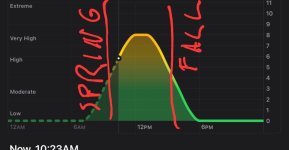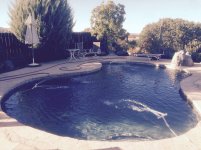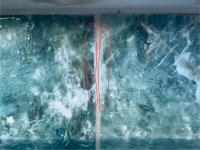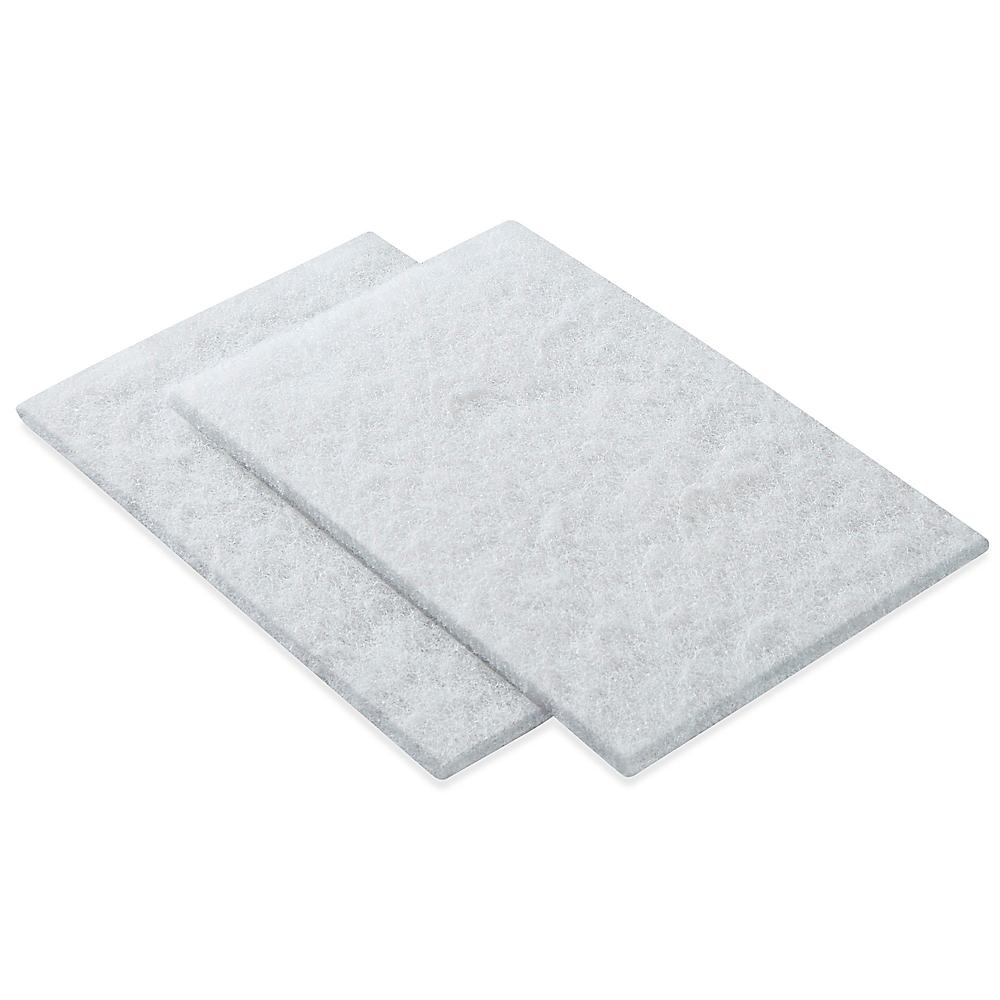Long-winded warning!!
My pool's finish attracted calcium like a magnet. The previous owners let it go and it destroyed the finish. And they had a massive amount of build up on the edge tile, too. It took a pro to remove it from the tile (they mechanically blasted it with something), and I had to replace the finish to fix the rest of the pool.
Fast forward a few years, with very strict adherence to TFP guidelines, especially CSI, and my finish was still pristine, as was the edge tile. I was quite proud of myself, and thought I had solved these two problems forever.
As of today, the finish is still pristine, but the tile now has some build up. Probably the same stuff you're seeing. It cannot be a water chemistry issue (because I've been a maniac about it), and I don't think it's efflorescence (if by that you mean something leeching from the material). Like yours, mine only exists above the water line, and not all the way up to the top of the tile.
I believe this is due to evaporation. The water laps up above the waterline, and then evaporates off the tile. It leaves behind a mineral residue (mostly calcium I presume). If I had taken care of it regularly, I could have probably used some minimal mechanical abrasion (maybe even a plastic scrubby) to keep it at bay. But I didn't, and now I have a big chore in front of me.
My instinct was to try acid, just as you are getting ready to, but I've since learned about an alternative. Muriatic might work, but it is H to work with, and potentially dangerous (to you and the finish). You always want to start with the least intrusive solution first. Which is kinda what Kim was suggesting, but I would start much, much lower, and not use acid at all, at least not at first.
If you can mechanically remove it, do that, and don't use any chemical as a shortcut. When I ran my issue by my guru (
@mcleod, an expert in this particular field) he suggested I start with something like this:
Conforms to uneven surfaces. Lasts longer than steel wool. Anti-scratch coating. Gentle polishing of stainless steel and glass. Works well with liquid detergent. White, super fine-grade aluminum silicate.ULINE offers over 41,000 boxes, plastic poly bags, mailing tubes, warehouse supplies and...

www.uline.com
I also read here about an MO of using a slurry of Bar Keepers Friend, applied like a paste, covered with plastic wrap (I guess to help it stay in place), left for a while, and then wiped off (attempting to keep it out of the water as much as possible). Which I have yet to try but will be this Spring. Another here claims it works, others haven't had the same luck. BKF is acid-based, which is probably why this works, but it is much "gentler" than muriatic, and way easier to work with and control.
Muriatic will be my absolute last resort. In fact, I'll probably go to power tools before I try acid. I tried a drill with a wire brush attachment on a small patch, and that worked. But my edge tile isn't actually tile. It doesn't have a glaze, it's just sliced rock, so I don't recommend that for a glazed tile finish.
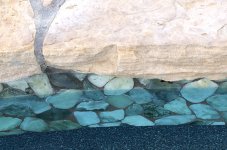
Disclosure: I've had some mishaps with muriatic (and CYA) acids, so I tend to be more cautious than others here, and perhaps more cautious than necessary.


